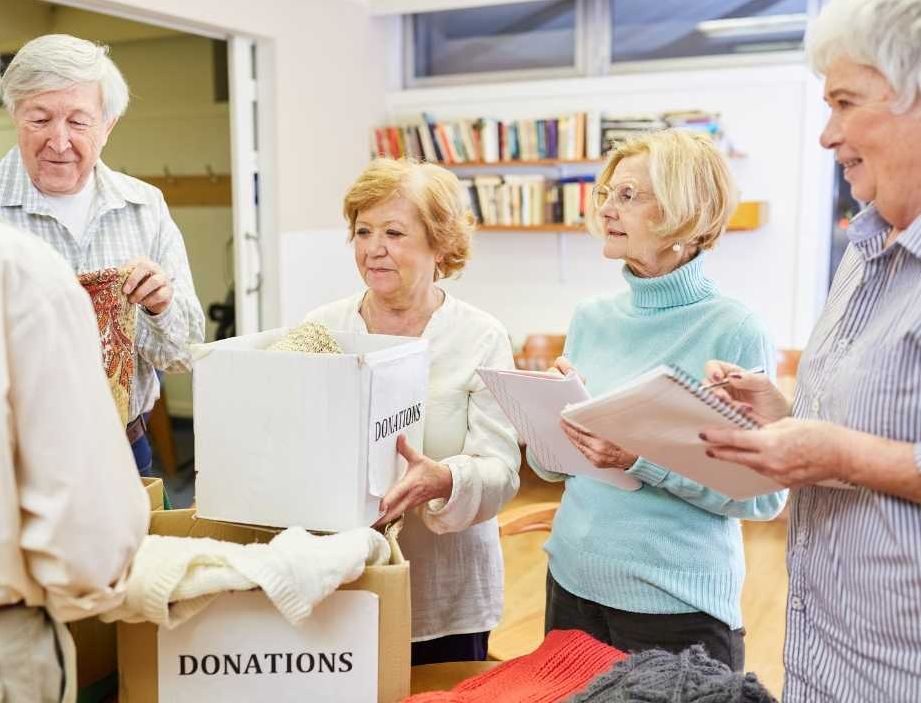Older woman reveals genius way her senior living friends get past their political differences
"You really can’t go wrong with this approach."
A group of senior friends
It might be an understatement to say that we are in divisive times. Many of us live in an echo chamber of our own making—carefully curated social media bouncing the same news sources and opinions back and forth like a game of pickleball.
But what if you find yourself in a situation where you can no longer curate your surroundings? What happens when circumstance make it impossible to only be around like-minded people? This happened to my mother (and many of her friends) when she moved into a senior living facility. All of a sudden, she found herself having dinner and playing Mahjong with people who (gasp) held different political opinions.
It took some getting used to. My mom, like many of us, is steadfast in her beliefs. She has spent decades learning about and fighting for the things she believes in, and in her mid-80s, most of those opinions are unlikely to change. That said, there was a simple solution to bridging the (often vast) gap between her and her new friends and building mates.
I asked her, "When you're seeking out friendships, even now in the senior center, what are the kinds of traits you look for? What bonds you?"
Her answer was quick and simple. "Volunteering together." She further explained, "Doesn't matter if you're on the left or right side of the aisle. If we're doing something together to help someone else, it's almost like that other stuff goes out the window."

Because of my mom's sight and mobility issues, her ability to volunteer is a bit limited. But she can help put care packages together for those in need, donate and organize jewelry for fundraisers (like for Alzheimer's), and she even offered up a dance class to the other residents called "Dances with Walkers." What she has found is that others who offer themselves with acts of service tell her nearly everything she needs to know about them. And it creates a true bond that goes beyond voting records.
She shared, "I mean there are still big ideas I'll always fight for. But the kindness people show by helping others is very important." I asked her how else that 'kindness' presents itself and, again, her answer was clear. "The way they talk to the staff. When we sit in the dining hall for dinner, I want to be around people who are kind to wait staff. On the day to day, that matters more than how they feel about tax brackets."
She also notes that laughter is a big factor. If she can sit and laugh with someone, that helps tide over any religious or political beliefs. Though here she also brings up an impactful quote that she calls "the right to exist one." The actual quote is: "We can disagree and still love each other, unless your disagreement is rooted in my oppression and denial of my humanity and right to exist." (Snopes shares it's often attributed to James Baldwin, but was actually written by author Robert Jones, Jr.)
As some might imagine, there are many recent Reddit threads regarding building bridges. One asks bluntly, "Is it possible for Democrats and Republicans to get along?" There are many answers, including a few who dig into their ideologies and claim the stakes are too high at this time. But there are also many who eloquently express that it's not only possible—it's common.
One Redditor writes, "It is. Respect for one another just needs to transcend political opinions. My best friend is very left wing and hates Trump. They even have an autograph from Obama framed and hanging in their home. We talk about politics infrequently because we already know each other's stances and realize our friendship is far more important."
This person argues that most people get along, despite what social media might portray: "I would say a far majority of the people of the US get along regardless of their political affiliation. Reddit is NOT the 'far majority.'"
Just recently, a piece was published on NJ.com (a site for all things New Jersey) about two political consultants, Julie Roginsky and Mike DuHaime, who are dear friends despite having different political views. On Friendly Fire, they're interviewed by Star-Ledger editor Enrique Lavín. When asked, "Q: Do you think your friendship has helped you better understand the 'other side'?" they each had insightful answers.
Roginsky said, "People would be surprised to know that Mike and I probably don’t disagree on much and I think we have probably evolved in each other’s directions as we have gotten older and ideology gave way to real learned experience. Mostly, I just really wish the best for Mike. When he has career successes or his kids do well and I hear about it, I am happy for my friend. Politics is really secondary to all that."
And DuHaime agreed. "I realized a long time ago that Julie and I have so much in common, and we should never be distracted by different viewpoints on policy. I cannot be happier than when I see Julie doing a great job on television or hearing somebody tell me about some success she has had. Think of how many billions of people there are on the Earth, and we were dropped into New Jersey politics at the same time. There is tremendous amount to have in common and a wonderful starting point for many great conversations."
- A senior citizen was about to be scammed out of $9,000. A Canadian bank teller saved the day. ›
- My Gen Z teen's reaction to the debate between John McCain and Barack Obama was shocking ›
- 'Wicked' is becoming a political Rorschach test and so many people are missing the point ›
- Man shares 8 things conservatives and liberals agree on - Upworthy ›
